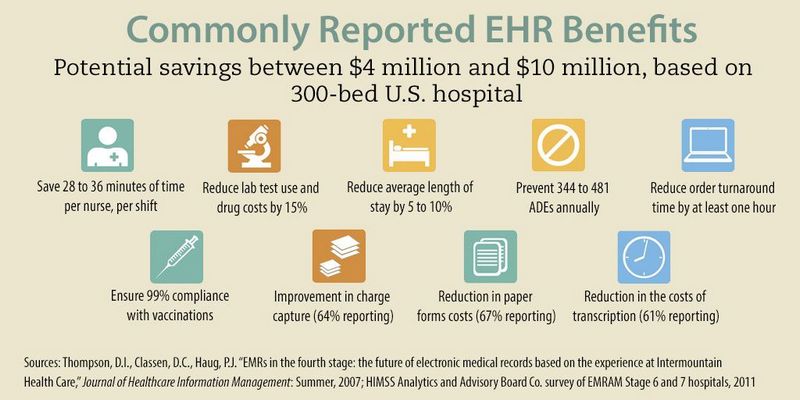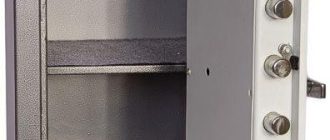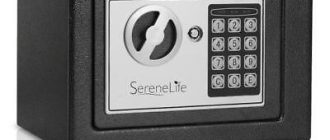
Advantages and disadvantages of digital safes
Digital safes are a popular choice for storing valuable items due to their convenience and efficiency. Using advanced technology, these safes offer numerous advantages over traditional lock-and-key safes.
One of the main benefits of digital safes is their enhanced security features. These safes often come equipped with advanced locking mechanisms, such as biometric fingerprint scanners or keypad combinations, which provide reliable protection against theft or unauthorized access. Additionally, digital safes can be programmed to send alerts or notifications in case of any tampering attempts, ensuring maximum security for your valuables.
Another advantage of digital safes is their ease of use and accessibility. With a simple touch or code, you can quickly open and close the safe, eliminating the need for cumbersome keys. This not only saves time but also reduces the risk of losing or misplacing the keys. Moreover, digital safes often come with adjustable shelves and compartments, allowing for efficient organization and easy retrieval of items.
While digital safes offer numerous benefits, they also have a few drawbacks that should be considered. One disadvantage is their dependence on electricity or batteries. In case of a power outage or if the batteries run out, you may find yourself unable to access your valuables. Additionally, there is also a risk of electronic malfunctions or hacking, which could potentially compromise the security of the safe.
In conclusion, digital safes offer a combination of convenience, efficiency, and advanced security features. While they provide reliable protection for your valuables and offer easy accessibility, it’s important to consider the potential disadvantages, such as reliance on power supply and the risk of electronic malfunctions. Ultimately, the choice between a digital safe and a traditional safe depends on your specific needs and preferences for the level of protection and usability.
Benefits and Drawbacks of Digital Safes: Explore the Pros and Cons
Digital safes offer numerous advantages that make them a popular choice for protecting valuable items. One of the main benefits is convenience. Unlike traditional safes that require a key or combination, digital safes can be easily opened and closed with a personal identification number (PIN) or biometric authentication, such as fingerprint or iris scanning. This makes accessing your belongings quick and easy, saving you time and effort.
Another advantage of digital safes is their efficiency. These safes often have advanced organization features, such as shelves, compartments, and hooks, which allow you to neatly arrange and store your items. This helps maximize the use of space and makes it easier to find and retrieve your belongings when needed.
Furthermore, digital safes provide a high level of protection. They are typically made with strong, durable materials, such as steel, that can withstand attempts to break them open. Additionally, many digital safes come with additional security features, such as tamper detection and alarm systems, which provide an extra layer of protection against unauthorized access.
Despite these advantages, there are some drawbacks to using digital safes. One of the main disadvantages is the risk of electronic malfunctions or failures. If the electronic components of the safe fail, it can become difficult or impossible to open the safe and retrieve your items. This can be a major inconvenience and potentially lead to permanent loss of your belongings.
Another drawback of digital safes is their dependence on power. Unlike traditional safes that do not require electricity, digital safes rely on power to operate their electronic components and locking mechanisms. If there is a power outage or the batteries run out, you may be unable to access your items until power is restored or new batteries are installed.
Additionally, digital safes may pose a higher security risk compared to traditional safes. While they offer advanced security features, digital safes can be vulnerable to hacking or other forms of electronic manipulation. If a skilled hacker gains access to the safe’s electronic systems, they may be able to bypass the security measures and gain unauthorized access to your belongings.
In conclusion, digital safes offer many advantages, including convenience, efficiency, and enhanced protection. However, they also have some drawbacks, such as the risk of electronic malfunctions, dependence on power, and potential security vulnerabilities. It is important to carefully consider these pros and cons before deciding if a digital safe is the right choice for your needs.
Advantages of Digital Safes
Digital safes offer several advantages over traditional safes:
- Technology: Digital safes utilize advanced technology to provide enhanced security features.
- Convenience: Digital safes are easy to use and offer convenient access to stored items.
- Efficiency: Digital safes provide quick and efficient access to stored items.
- Protection: Digital safes offer protection against theft, fire, and other potential hazards.
- Security: Digital safes use encryption and other security measures to ensure the safety of stored items.
In conclusion, digital safes provide many advantages compared to traditional safes. They offer advanced technology, convenience, efficiency, protection, and security, making them a superior option for storing valuable items.
Convenience and Accessibility
One of the key advantages of digital safes is their convenience and accessibility. With the advancements in technology, digital safes have become more efficient and reliable for safeguarding valuable items.
The convenience factor lies in the ability to easily access the safe using a digital keypad or biometric authentication. This eliminates the need for physical keys, which can be misplaced or stolen. It also saves time, as users no longer have to search for the correct key to unlock the safe.
Another aspect of convenience is the ability to store a large amount of items in a digital safe. Digital safes are generally designed with multiple compartments and adjustable shelves, allowing users to organize their valuables efficiently. This makes it easy to locate and retrieve items whenever needed.
Furthermore, digital safes offer a higher level of protection compared to traditional safes. The advanced security features, such as PIN codes, fingerprint recognition, and encryption technology, ensure that only authorized individuals can access the safe. This adds an extra layer of security and gives users peace of mind knowing that their valuables are well-protected.
In terms of accessibility, digital safes are also designed to be user-friendly. The intuitive interface and simple instructions make it effortless for anyone to operate the safe, even those who are not tech-savvy. This makes digital safes accessible to a wide range of users, including the elderly and individuals with disabilities.
In conclusion, the convenience and accessibility of digital safes offer numerous benefits to users. The efficiency and advanced technology of these safes provide enhanced security and protection for valuable items. Additionally, the user-friendly interface makes digital safes accessible to a wide range of users, ensuring ease of use for everyone.
Enhanced Security Features
Digital safes offer enhanced security features through the integration of advanced technology. These safes provide a higher level of protection compared to traditional mechanical safes.
There are several advantages of using digital safes for securing valuable items:
- Convenience: Digital safes allow for easy and quick access to your valuables. Gone are the days of fumbling with keys or combinations. With a digital safe, you simply need to enter your unique code or use a biometric feature to unlock it.
- Efficiency: Digital safes are designed to provide efficient access to your belongings. The advanced technology enables faster authentication and quicker response times.
- Advanced Technology: Digital safes leverage cutting-edge technology, such as fingerprint recognition, facial recognition, or voice recognition, to provide secure access. These features make it extremely difficult for unauthorized individuals to gain access to your valuables.
Despite their many advantages, digital safes also have some drawbacks:
- Technology Dependence: As digital safes rely on electronic components, they are susceptible to power outages, malfunctions, or hacking attempts. In the event of a power outage or malfunction, it could be challenging to access the contents of the safe.
- Initial Setup: Setting up a digital safe can be more complicated compared to a traditional safe. It involves programming a unique code or configuring biometric features, which may require additional time and effort.
- Higher Costs: Digital safes tend to be more expensive than mechanical safes due to the advanced technology and features they offer. The initial investment for a digital safe can be higher, and there may also be additional costs associated with maintenance or repairs.
Overall, digital safes provide enhanced security features through advanced technology, offering convenience and efficiency in accessing your valuables. However, they also come with some disadvantages, such as technology dependence and higher costs. When considering whether to invest in a digital safe, it’s essential to evaluate your specific needs and weigh the benefits against the drawbacks.
Protection from Fire and Water Damage
When it comes to protecting your valuable possessions, digital safes offer a number of advantages. One of the key benefits is their ability to provide protection from fire and water damage.
Digital safes are designed to withstand high temperatures and can keep the contents inside safe even in the event of a fire. They are constructed with fire-resistant materials that can withstand intense heat, ensuring that your important documents, cash, and other valuable items remain intact.
Additionally, digital safes are often equipped with waterproof features, offering an added layer of protection against water damage. This is especially important in cases of flooding or leaks, where traditional safes may not be able to safeguard their contents.
The convenience of digital safes is another advantage when it comes to protecting against fire and water damage. Unlike traditional safes, which require manual locking and unlocking, digital safes can be easily accessed using a PIN number or biometric recognition. This allows for quick and efficient access to your belongings during an emergency situation.
However, it’s important to consider some of the disadvantages of digital safes as well. While they offer enhanced security and efficiency, digital safes can be vulnerable to hacking or electronic malfunctions. It is crucial to choose a reputable brand and ensure that the safe has advanced security measures in place to mitigate these risks.
In conclusion, digital safes provide protection from fire and water damage, offering convenience, security, and efficiency. However, it is important to weigh the advantages against the potential disadvantages and select a safe that meets your specific needs and requirements.
Smart Features and Integration
Digital safes offer a range of smart features and integration options that greatly enhance their efficiency and convenience. These advancements in technology provide added advantages when it comes to protecting your valuable belongings.
One of the key benefits of digital safes is the ability to integrate them with other devices and systems. This integration allows for seamless communication and control, providing a higher level of security. For example, you can connect your digital safe to your smartphone or home security system, giving you the ability to monitor and control it remotely.
With this integration, you can receive real-time notifications if someone tries to tamper with or open the safe. This added layer of protection ensures that you can take immediate action if any unauthorized access is detected.
Furthermore, digital safes often come with advanced features such as biometric authentication. This allows for quick and secure access, as you can use your fingerprint or facial recognition to unlock the safe. Compared to traditional safes that rely on keys or combinations, this feature provides enhanced convenience and security.
Despite these advantages, there are also some disadvantages to consider. One potential drawback of digital safes is their reliance on electricity. In the event of a power outage, you may be unable to access the contents of the safe until power is restored. This can be a significant inconvenience in certain situations.
Another disadvantage is the risk of digital malfunctions or hacking. While digital safes are designed to be secure, there is always a small possibility of technical glitches or vulnerabilities being exploited. It is important to choose a reputable and trusted brand to minimize these risks.
In conclusion, the smart features and integration options offered by digital safes provide numerous benefits, including increased efficiency, convenience, and security. However, it is important to weigh these advantages against the potential disadvantages of relying on digital technology for the protection of your valuables.
Easy Monitoring and Control
One of the great advantages of digital safes is the ability to easily monitor and control your security system through technology. With a digital safe, you can conveniently access and manage your safe from anywhere at any time, as long as you have an internet connection. This level of accessibility and control provides added efficiency and convenience for users.
Through digital interfaces and mobile applications, users can easily monitor the status of their safes, including checking if the safe is locked or unlocked, monitoring any attempted break-ins, and even receiving real-time notifications if there is any suspicious activity detected.
Another aspect of easy monitoring and control is the ability to remotely manage access to the safe. With digital safes, you can grant and revoke access to the safe for specific individuals, as well as set different levels of permissions for each user. This allows for better control over who has access to your valuables and provides an added layer of protection.
In addition, digital safes often come with features such as audit trails, which record and track all activity and access to the safe. This feature can be particularly useful for businesses or organizations that need to keep a detailed record of who accessed the safe and when.
Overall, the easy monitoring and control capabilities of digital safes provide users with enhanced security, convenience, and protection for their valuable possessions.
Durable and Long-lasting
One of the advantages of digital safes is that they are durable and long-lasting. Unlike traditional safes that may be prone to rusting or degradation over time, digital safes are designed to withstand the test of time. They are often made from high-quality materials, such as steel or reinforced plastic, which provide excellent protection against external forces.

Digital safes offer convenience and efficiency in terms of accessing and organizing your belongings. With a digital safe, you can easily store and retrieve your valuable items without the need for keys or codes. The digital keypad or biometric scanner allows for quick and secure access to your belongings, providing a level of convenience that traditional safes cannot match.
One of the primary advantages of digital safes is their enhanced security features. They often come equipped with advanced security measures such as dual steel bolts, fire-resistant construction, and tamper-proof mechanisms. These features significantly reduce the risk of unauthorized access, ensuring that your valuables remain protected and secure.
However, despite their many advantages, digital safes do have some disadvantages. For example, they may rely on batteries or electricity for operation, which could pose a problem during power outages or if the batteries run out. Additionally, there is a small risk of digital malfunctions or hacking attempts, although manufacturers are constantly improving their security measures to minimize these risks.
In conclusion, the durability and long-lasting nature of digital safes make them an excellent choice for protecting your valuable belongings. Their convenience, efficiency, and enhanced security features outweigh any potential drawbacks, making them an ideal option for safeguarding your valuables.
Customizable Settings
One of the advantages of digital safes is their customizable settings, which allow users to tailor the security features to their specific needs. This level of flexibility and control enhances the efficiency of digital safes and makes them an attractive option for individuals and businesses alike.
With customizable settings, users can easily adjust parameters such as access codes, time delays, and notification preferences. This makes it possible to create a personalized security system that aligns with the unique requirements of each user.
For example, if someone needs to grant access to multiple individuals, they can set up multiple unique codes to track who has entered the safe and when. This not only enhances security but also provides a record of access, which can be useful for monitoring purposes.
Moreover, customizable settings allow users to set time delays, which can be beneficial in situations where multiple people require access but need to enter at different times. By setting a time delay, users can ensure that each person has adequate time to access the safe without compromising its security.
Additions such as email or SMS notifications can also be configured to alert users when the safe has been accessed or if any unauthorized attempts have been made. This provides an additional layer of protection and helps ensure that users can promptly respond to any potential threats.
However, like any technology, digital safes with customizable settings have their disadvantages. Some users may find the customization process to be complicated or time-consuming. In addition, there is a risk of forgetting or mismanaging the customized settings, which could lead to lockouts or other security issues.
Overall, the ability to customize the settings of digital safes offers numerous benefits, such as enhanced security, greater control, and convenience. While there are potential drawbacks, the advantages outweigh the disadvantages, making digital safes with customizable settings a valuable option in today’s security-conscious world.
Advanced Organizational Features
One of the advantages of digital safes is their advanced organizational features enabled by technology. These safes offer a high level of protection and efficiency due to their digital nature.
With digital safes, you can easily categorize and organize your belongings, making it convenient to locate items when needed. The digital interface allows you to create different folders or compartments within the safe, ensuring everything is stored in an organized manner.
Furthermore, digital safes often come with additional security features such as fingerprint recognition or facial recognition, adding an extra layer of protection to your valuable possessions. These features ensure that only authorized individuals can access the safe, further enhancing its security.
The convenience offered by digital safes cannot be overlooked. With traditional safes, one may need to manually search through various items to locate a specific document or valuable. However, digital safes provide a search function that allows you to quickly find what you need by simply inputting keywords or using filters.
In addition, the advanced organizational features of digital safes contribute to increased efficiency. You can save time and effort by easily categorizing and accessing your belongings. The technology behind digital safes allows for quick and seamless organization, eliminating the need for manual sorting and rearranging.
In conclusion, the advanced organizational features of digital safes provide numerous benefits. From enhanced security measures to convenience and efficiency, digital safes offer a modern and efficient solution for protecting your valuable possessions.
Reduced Risk of Theft
One of the main advantages of digital safes is the reduced risk of theft. Traditional safes that use physical key locks or combination locks can be vulnerable to theft as the locks can be easily picked or the combinations cracked. Digital safes, on the other hand, use advanced technology to provide a higher level of security and protection.
With digital safes, users can set up a unique passcode that only they know, making it much more difficult for thieves to gain access. In addition, some digital safes also have additional security features, such as fingerprint scanners or facial recognition, further enhancing the level of protection.
Another convenience of digital safes is that they can be easily integrated with other security systems, such as alarms or surveillance cameras. This allows for a more comprehensive approach to protecting valuable items and ensures that any potential theft attempts are quickly detected and addressed.
However, it is important to note that digital safes are not without their disadvantages. One drawback is the reliance on technology, which can be prone to malfunctions or hacking attempts. If the electronic components of the safe fail or if a skilled hacker manages to bypass the security measures, the contents of the safe may be at risk.
Overall, while digital safes offer increased convenience and security compared to traditional safes, it is important to carefully consider the advantages and disadvantages before making a decision. It is also advisable to choose a reputable brand and regularly update the passcodes to minimize the risk of theft and ensure the continued protection of valuable items.
Peace of Mind
One of the main advantages of digital safes is the peace of mind they offer. With the advances in technology, digital safes provide a higher level of security and protection compared to traditional safes. By using cutting-edge encryption and authentication methods, digital safes ensure that only authorized individuals can access the stored valuables.
Another convenience of digital safes is their efficiency. Unlike traditional safes, which require physical keys or combinations, digital safes can be accessed with a simple PIN code or even biometric authentication, such as fingerprints. This eliminates the risk of losing keys or forgetting combinations, making it more convenient to access your valuables.
Furthermore, digital safes offer enhanced security features. They often come equipped with alarms and notifications, alerting the owner in case of any unauthorized attempts or suspicious activities. Additionally, some digital safes can be remotely monitored and controlled, providing an extra layer of security and peace of mind.
However, there are also some disadvantages to using digital safes. One of the main concerns is the reliance on technology. Since digital safes operate using electronic components, there is a risk of malfunctions or power outages. This can potentially result in being locked out of the safe or losing access to the stored valuables.
Overall, digital safes offer a range of benefits, including convenience, efficiency, and enhanced security. While they may have some disadvantages, the peace of mind they provide can outweigh the potential risks. As technology continues to advance, digital safes are likely to become even more secure and reliable, making them a smart choice for protecting your valuable assets.
Disadvantages of Digital Safes
Digital safes come with many advantages in terms of convenience and protection, but they also have their fair share of disadvantages. It is important to consider these drawbacks before investing in a digital safe.
- Reliance on technology: Digital safes rely on electronic components and software, making them vulnerable to technical malfunctions and system failures. If the electronics fail, you may not be able to access your valuables.
- Security concerns: While digital safes are designed to provide security, they can still be susceptible to hacking and electronic attacks. Skilled hackers may be able to bypass the security features of a digital safe, putting your valuables at risk.
- Power dependency: Digital safes require a power source, usually in the form of batteries, to operate. If the batteries run out or are not properly replaced, you may find yourself locked out of the safe. This can be especially problematic during emergencies or power outages.
- Complexity: Digital safes often have a complex interface with various buttons and settings. This complexity can make it more difficult to operate the safe, especially for individuals who are not technologically inclined. User errors can result in lockouts or other issues.
- Limited lifespan: The electronic components in digital safes may have a limited lifespan. Over time, wear and tear can degrade the performance of these components, making the safe less reliable. Regular maintenance and occasional replacement of parts may be necessary.
Considering these disadvantages, it is important to weigh the pros and cons of digital safes before making a decision. While they offer convenience and advanced security features, the potential risks and challenges associated with electronic safes should not be overlooked.
Vulnerability to Power Outages
One major drawback of digital safes is their vulnerability to power outages. Since digital safes rely on electricity to operate, they become useless in the event of a power failure. This can be a significant concern, especially in areas prone to frequent power interruptions or during natural disasters.
The reliance on electricity for operation also means that digital safes are susceptible to hacking or tampering. Although they often have security measures in place, such as passwords or biometric authentication, these can be compromised if the power is cut off. This vulnerability poses a risk to the security and protection of valuable items stored inside the safe.
On the other hand, traditional safes that do not rely on technology can still provide security and protection during power outages. These safes typically use mechanical locks that do not require electricity to function. This offers an added level of reliability and convenience, as the safes can be accessed even when there is no power.
However, it is important to note that digital safes also offer advantages in terms of convenience and efficiency. They often come with features such as automatic locking mechanisms and the ability to easily change access codes. This makes them more user-friendly and convenient compared to traditional safes.
In conclusion, while digital safes offer a range of advantages in terms of convenience and technology, their vulnerability to power outages is a significant drawback. It is important to carefully consider the specific needs and circumstances before deciding on the type of safe to use for maximum security and protection.
Q&A:
What are the benefits of using a digital safe?
Using a digital safe offers several benefits. First, it provides a higher level of security compared to traditional safes. Digital safes often come with advanced locking mechanisms, such as biometric scanners or keypad locks, which make it difficult for unauthorized individuals to access the contents. Additionally, digital safes are more user-friendly and convenient, as they allow for quick and easy access to your items. You can simply enter a password or scan your fingerprint to unlock the safe, eliminating the need to carry around keys. Furthermore, digital safes often come with additional features like LED lights and adjustable shelves, making it easier to organize and locate your belongings.
Are there any drawbacks to using a digital safe?
While digital safes offer many advantages, there are a few drawbacks to consider. First, digital safes rely on electronic components, which can fail or malfunction over time. This can result in being locked out of the safe or having difficulty accessing your items. Additionally, some digital safes may be susceptible to hacking or tampering if not properly secured. It’s important to choose a reputable brand and follow best practices for securing your digital safe to minimize these risks. Finally, digital safes require batteries to operate, and if the batteries die, you may have trouble accessing your items until they are replaced.
Do digital safes provide better protection than traditional safes?
Digital safes generally provide better protection than traditional safes. While both types of safes can offer a certain level of security, digital safes often have advanced locking mechanisms that are difficult to bypass. Biometric scanners and keypad locks require specific credentials, such as a fingerprint or a password, making it harder for unauthorized individuals to gain access. Additionally, digital safes often have a sturdier construction and may be made from materials like steel, further enhancing their security. However, it’s important to choose a digital safe from a reputable brand and ensure it meets any necessary safety standards to ensure optimal protection.
Are digital safes suitable for all types of valuables?
Digital safes are suitable for a wide range of valuables. They are commonly used to store items such as cash, jewelry, important documents, passports, and small electronic devices. Digital safes often come with adjustable shelves or compartments, allowing you to customize the interior space to fit your specific needs. However, it’s important to note that some digital safes may have size restrictions, so larger or irregularly shaped items may not fit. Additionally, certain items with special storage requirements, such as large sums of cash or highly sensitive documents, may benefit from additional security measures, such as a combination of a digital safe and a secondary locked container.
Can digital safes be easily installed in a home or office?
Yes, digital safes are generally easy to install in a home or office. Most digital safes come with mounting hardware and instructions for installation. They can be bolted to the floor or wall, providing additional security and making it more difficult for thieves to remove the safe. It’s important to choose a suitable location for the safe, taking into consideration factors such as accessibility and concealment. Additionally, if you are unsure about the installation process, it’s recommended to hire a professional to ensure the safe is properly secured.
What are the benefits of using a digital safe?
There are several benefits of using a digital safe. Firstly, they offer enhanced security compared to traditional safes. With digital safes, you can create a unique pin or password that only you know, making it more difficult for unauthorized individuals to access your valuable belongings. Additionally, digital safes often come with advanced features such as biometric fingerprint scanners or facial recognition, further increasing the level of security. Furthermore, digital safes are convenient to use as they allow quick and easy access to your belongings without the need for keys. Lastly, these safes are often compact and can be easily installed in various locations such as your home, office, or hotel room.






